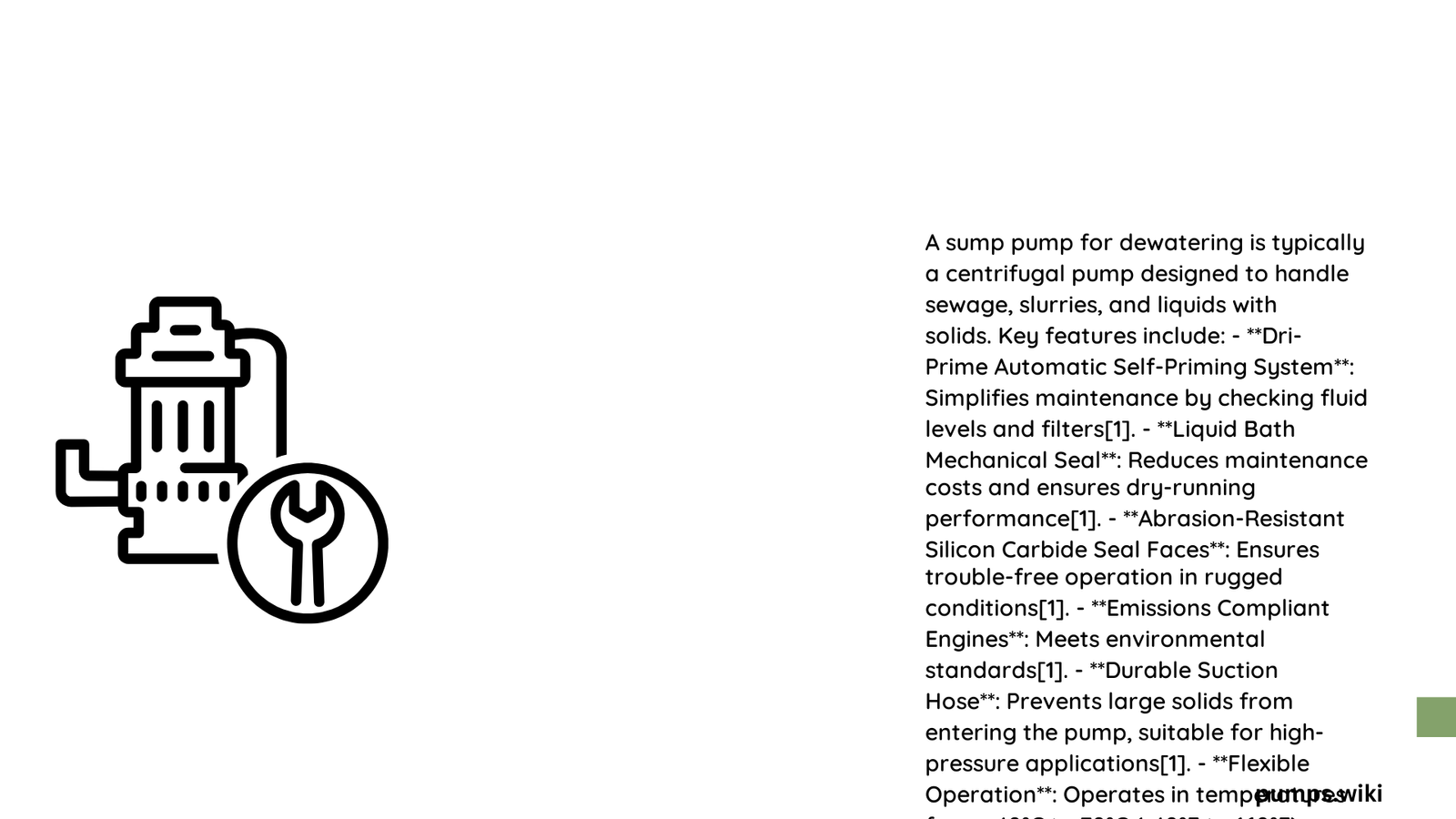Sump pumps are critical water management systems designed to remove accumulated water from basements, crawl spaces, and other low-lying areas prone to flooding. These powerful devices efficiently extract groundwater, preventing structural damage, mold growth, and potential foundation issues by automatically pumping water away from your property through a discharge pipe, ensuring a dry and protected environment.
What Makes Sump Pump Dewatering Essential?
Water accumulation can cause significant damage to residential and commercial structures. A sump pump for dewatering provides a proactive solution by:
- Preventing basement flooding
- Reducing moisture-related structural damage
- Mitigating mold and mildew growth
- Protecting valuable property and equipment
- Maintaining a healthy indoor environment
How Do Sump Pumps Effectively Remove Water?
Sump pumps operate through a systematic process:
- Water Collection
- Water naturally flows into a specially constructed sump pit
- Pit typically measures 18-24 inches in diameter
-
Located at the lowest point of the basement or crawl space
-
Activation Mechanism
- Float switch detects water level
- Automatically triggers pump when water reaches critical height
- Submersible pumps activate quickly and efficiently
What Factors Determine Sump Pump Performance?
| Performance Factor | Recommended Specifications |
|---|---|
| Horsepower | 1/3 HP to 3/4 HP |
| Discharge Capacity | 30-60 Gallons Per Minute |
| Vertical Lift | 10-25 feet |
| Discharge Pipe Size | 1 1/4″ to 1 1/2″ |
Which Sump Pump Types Work Best for Dewatering?

Submersible Sump Pumps
- Completely submerged in water
- Quieter operation
- More compact design
- Ideal for residential applications
Pedestal Sump Pumps
- Motor positioned above water
- Easier maintenance
- Lower cost
- Suitable for smaller water volumes
How to Optimize Sump Pump Dewatering Performance?
Proper Installation Techniques
- Ensure level pit foundation
- Use appropriate discharge piping
- Install check valve to prevent backflow
- Consider battery backup systems
Maintenance Best Practices
- Inspect pump every 3-6 months
- Clean intake screens
- Test float switch functionality
- Check discharge pipe for blockages
What Are Common Dewatering Challenges?
- High Water Table Areas
- Require more powerful pumps
-
May need multiple drainage points
-
Seasonal Water Fluctuations
- Adjust pump capacity accordingly
-
Consider variable speed pumps
-
Sediment Accumulation
- Use filtration systems
- Regularly clean sump pit
Recommended Sump Pump Models for Dewatering
- Zoeller M53: Best for residential use
- Wayne CDU800: High-performance option
- Liberty Pumps 257: Reliable and efficient
Cost Considerations
| Pump Type | Initial Cost | Annual Maintenance |
|---|---|---|
| Submersible | $200-$500 | $50-$100 |
| Pedestal | $100-$300 | $30-$75 |
Professional Installation vs. DIY
When to Hire Professionals
- Complex drainage scenarios
- Multiple water entry points
- Significant structural modifications required
DIY Considerations
- Basic plumbing skills needed
- Understand local building codes
- Proper tools and safety equipment essential
Conclusion
Effective sump pump dewatering requires strategic planning, appropriate equipment selection, and consistent maintenance. By understanding your specific water management needs, you can protect your property from potential water damage.
